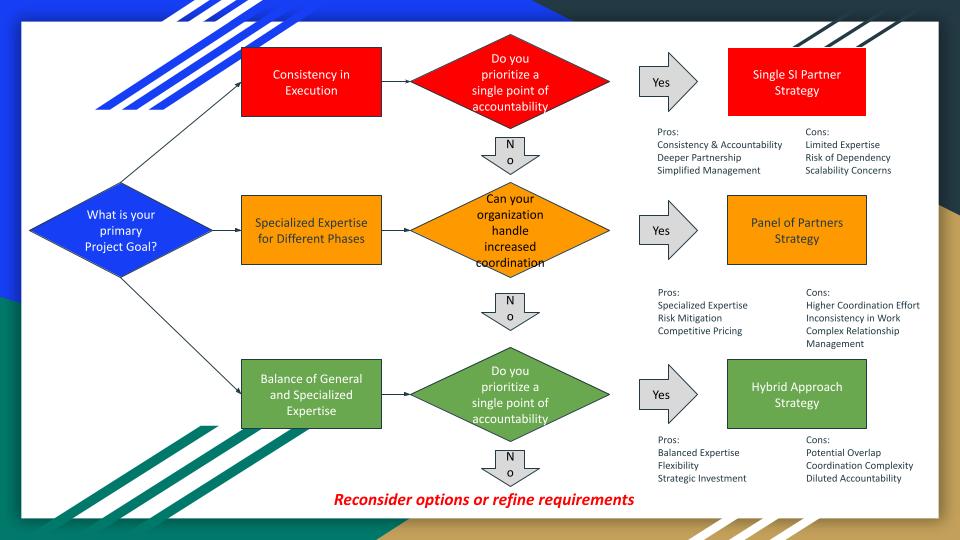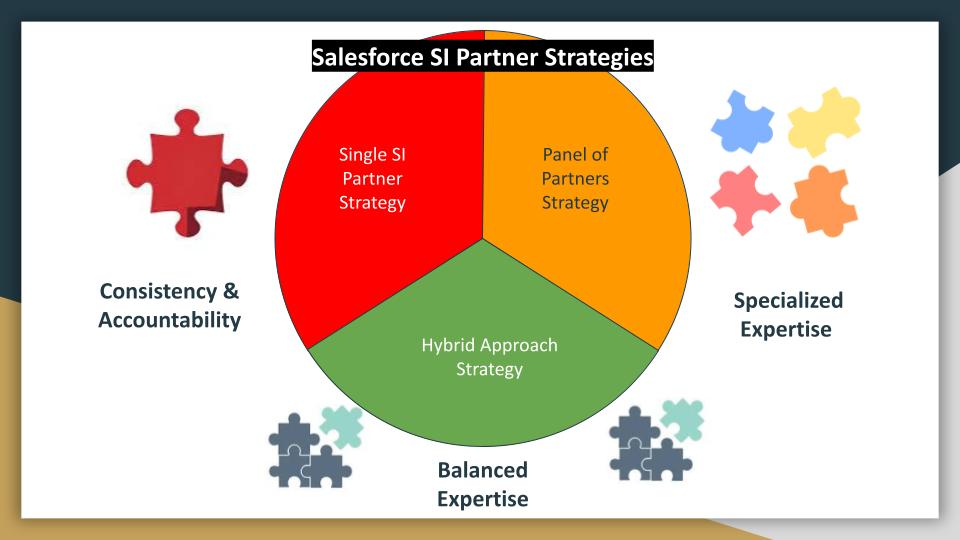Boost Your Salesforce Projects: The Ultimate Guide to Partner Strategies
As a professional who has spent over a decade immersed in the Salesforce ecosystem, frequently asked questions about strategies from customers are part and parcel of my daily routine. Whether it’s during a casual chat at a conference or in a formal consultation, the inquiry often boils down to: “What is the best strategy for engaging with System Integrator (SI) partners?” The answer, as you might expect, is a classic consultant’s response: it depends.
Tailoring the Introduction for IT Decision-Makers
If you’re an IT decision-maker or a Salesforce user looking to optimise your SI partner strategy, understanding the nuances and benefits of different approaches is crucial. My journey in the Salesforce ecosystem, encompassing roles as a customer, admin, partner, and now in Alliances and Channels at Salesforce, has provided me with a unique perspective on these strategies.
My Journey in Salesforce Alliances
Before diving into the strategies, let me provide some context. My career has spanned various roles within the Salesforce ecosystem, including customer-facing positions, administrative roles, and direct sales. I’ve navigated the complexities of both Regional System Integrators (RSIs) and Global System Integrators (GSIs), gaining firsthand insights into their strengths and limitations. Currently, as a Partner Sales Director at Salesforce, I leverage this diverse experience to guide customers and partners alike in crafting effective alliance strategies.

Understanding SI Partner Strategies
SI partner strategies can be broadly categorised into three main approaches. Each strategy comes with its own set of advantages and challenges, which I’ll explore in the context of my experiences.
- Utilising a single SI partner for end to end deliver & transformation
- Engaging a panel of partners, often working on discreet projects
- Adopting a hybrid approach, for example one main partner and then specialised partners for niche projects
Single SI Partner Strategy
Pros:
- Consistency & Accountability: Having a single point of contact ensures consistency in execution and clear accountability.
- Deeper Partnership: Building a strong relationship with one partner can lead to better terms and increased dedication.
- Simplified Management: Managing one partner reduces internal overhead and simplifies project coordination.
Cons:
- Limited Expertise: A single partner might not possess the niche expertise needed for specific project phases.
- Risk of Dependency: High dependency on one partner can be risky if issues arise.
- Scalability Concerns: Scaling resources for large or diverse projects might be challenging.
Typical Benefits: For instance, a client who adopted a single SI partner strategy might see a 20% reduction in project delays due to the streamlined communication and accountability.
Panel of Partners Strategy
Pros:
- Specialised Expertise: Access to a diverse set of skills and experiences tailored to different project phases.
- Risk Mitigation: Reduces risk by not relying on a single partner.
- Competitive Pricing: Encourages cost savings through competitive bidding among panel members.
Cons:
- Higher Coordination Effort: Increased overhead in managing multiple partners and contracts.
- Inconsistency in Work: Potential variability in quality and approach among different partners.
- Complex Relationship Management: Managing multiple vendor relationships can be complex.
Typical Benefits: A customer using this strategy could report 15% cost savings due to competitive pricing among their panel of partners.
Hybrid Approach
Pros:
- Balanced Expertise: Combines the general expertise of a primary partner with niche specialists for specific needs.
- Flexibility: Offers the strength of a primary partner while allowing engagement with others for specialised tasks.
- Strategic Investment: Main partners might invest more in the relationship, knowing they hold the majority of the work.
Cons:
- Potential Overlap: Responsibilities might overlap, causing confusion.
- Coordination Complexity: Still requires managing multiple relationships, though less than a full panel.
- Diluted Accountability: Pinpointing responsibility for issues can be challenging.
Typical Benefits: Organisations employing a hybrid approach have seen a 25% improvement in project efficiency due to the optimal blend of broad and specialised expertise.
Future Trends in SI Partner Strategies
As the Salesforce landscape continues to evolve, SI partner strategies are also likely to change. Emerging trends include:
- Increased Use of AI and Automation: These technologies can enhance coordination and project management, reducing the overhead of managing multiple partners.
- Greater Focus on Industry-Specific Expertise: As industries become more specialised, the demand for niche expertise within SI partners will grow.
- Collaborative Ecosystems: Partnerships between multiple SIs to leverage each other’s strengths and deliver comprehensive solutions.
Choosing the Right Strategy
Ultimately, the choice of SI partner strategy should be aligned with your organisation’s specific needs, project requirements, and internal capabilities. Factors such as project scale, the complexity of tasks, and the need for specialised skills play a crucial role in this decision. Leveraging my background, I work closely with customers to understand their unique contexts and guide them towards the most suitable strategy.
Conclusion
Navigating SI partner strategies is a nuanced task that requires a deep understanding of the various options and their implications. Drawing from my extensive experience in the Salesforce ecosystem, I emphasise that there is no one-size-fits-all solution. Each organisation must assess its own needs and capabilities to determine the best approach, whether it’s a single SI partner, a panel of partners, or a hybrid strategy.
By sharing these insights and leveraging the detailed framework provided, I aim to help customers make informed decisions that drive successful outcomes in their Salesforce projects. If you have any questions or need further guidance, feel free to reach out – I’m always here to help!
Further Reading:







